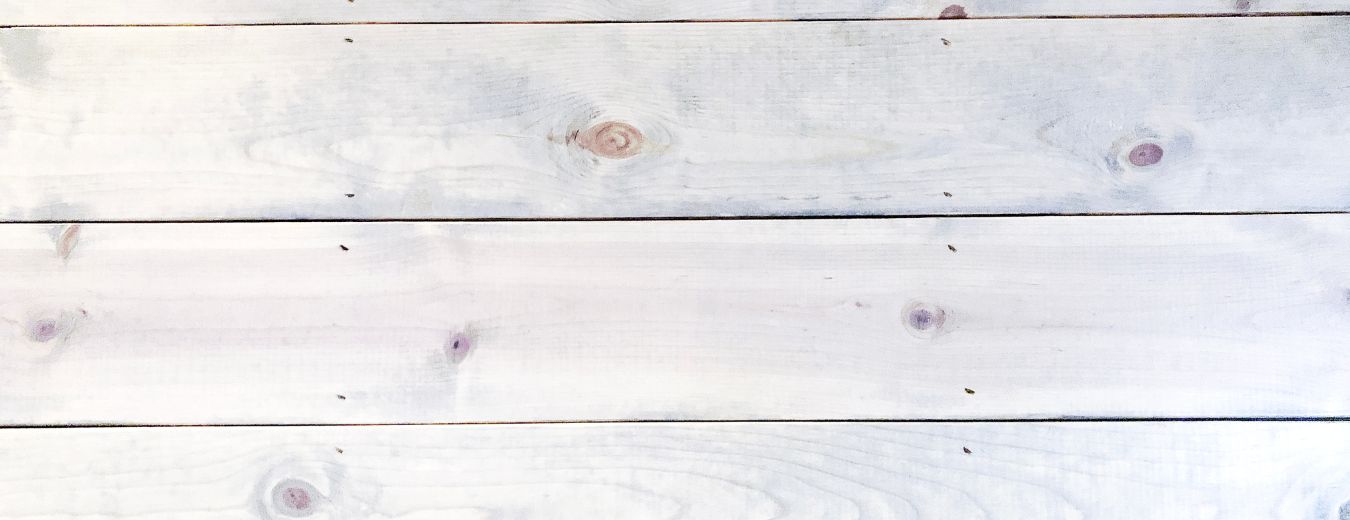
Whitewashing Fences, Paneling, Decks, and Pergolas
Posted on July 6, 2021
When people think of whitewashing, they think of picket fences or old barns but whitewashing as an alternative to solid painting or traditional dark staining is making a comeback.
Whitewashed wood presents a light finish that allows the natural wood grain to show through while still sealing and protecting the wood underneath. You may have also heard whitewashing referred to as limewashing or pickling.
Whitewashing works well outdoors on fences, decks, and pergolas but it can also be used inside on unfinished wood paneling to create a bright, natural finish with a lot of interesting detail. For interior use, it works especially well in rustic and informal settings like a beach house, old cottage, or pool house.
Today the whitewashed look is generally achieved using a modern pre-mixed stain rather than the original formulation from the 1800s that mixed lime or chalk with water and resulted in a fairly short-lived finish.
Between the time of early whitewash and today’s modern formulations, most painters simply thinned down white paint with either turpentine or water until it could create an effect that resembled the original semi-transparent look.
So, where should you consider whitewashing today?
Let’s start on the interior. Bare wood paneling in any style from the 1970’s rumpus room look of vertical panels to modern horizontal decorative panels with spacing between each panel are good candidates. You can also add in kitchen cabinets and islands, wainscoting, and beadboard on the walls or ceiling. You can also consider using it on coffered ceiling beams.
The final appearance will be a combination of the whitewash stain you choose and the wood you apply it to. For light finishes, smooth pine is a great choice for a subtle look. For more detail, you can choose woods that have a more pronounced grain like oak that will show through the whitewash more clearly.
For interior use, it’s best to go with a water-based white wash stain since issues like fumes and clean-up are lessened.
It’s always a good idea to first try out the stain you intend to use on a sample of the material you intend to cover. Before you become completely committed you will want to know what the results will look like for the wood you’re using and if one coat or two is better to get the effect you’re after.
When applying whitewash it’s best to use a brush and apply the stain in long strokes that run with the grain. You can also use a cloth rag to go over the applied finish and remove any excess if you are trying to keep it light.
If you want to protect the finish you can go over it with a layer of polyurethane to seal it in but again you will want to test this on samples of wood to see what kind of finish you end up with. If you have decided on using two coats of stain and it hid more wood grain than you would have liked. A quick bit of sanding in spots will give you a uniform look that can then be locked in under the polyurethane.
For outdoor use your best bet is to use an oil-based whitewash stain. The results will repel water and seal the wood like a regular deck stain but you will still be able to achieve the light look you want. The oil-based whitewash stains also take a bit longer to dry giving you more time to get it just right.
Whitewashing is a great way to finish a pergola, a fence, or a deck. It looks especially nice in concert with a white house where the color is repeated across multiple features but some contrast is provided between the solid white of the house and the semi-transparent look of the whitewashed exterior feature.
White washing outdoors creates a rustic look that ties into nature with the visible wood grain and it provides an almost antique touch that makes your outdoor areas all the more interesting.
It’s a great look to consider when you are first building a deck, fence, or pergola but if you intend to make a switch to the whitewashed look you will have to prep the surfaces by sanding down past any prior finishes applied to the wood.
If you’re ready to add whitewashed wood finishes to your home why not meet with a CertaPro color consultant and review your options, our professional painters are more than capable of giving you just the right whitewashed look from your kitchen cabinets to your garden’s picket fence. If you’re ready to get started why not get a free estimate from the folks at CertaPro painters of Scottsdale.





